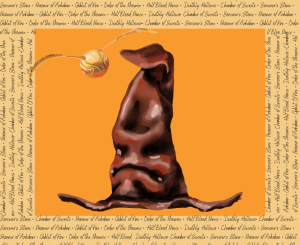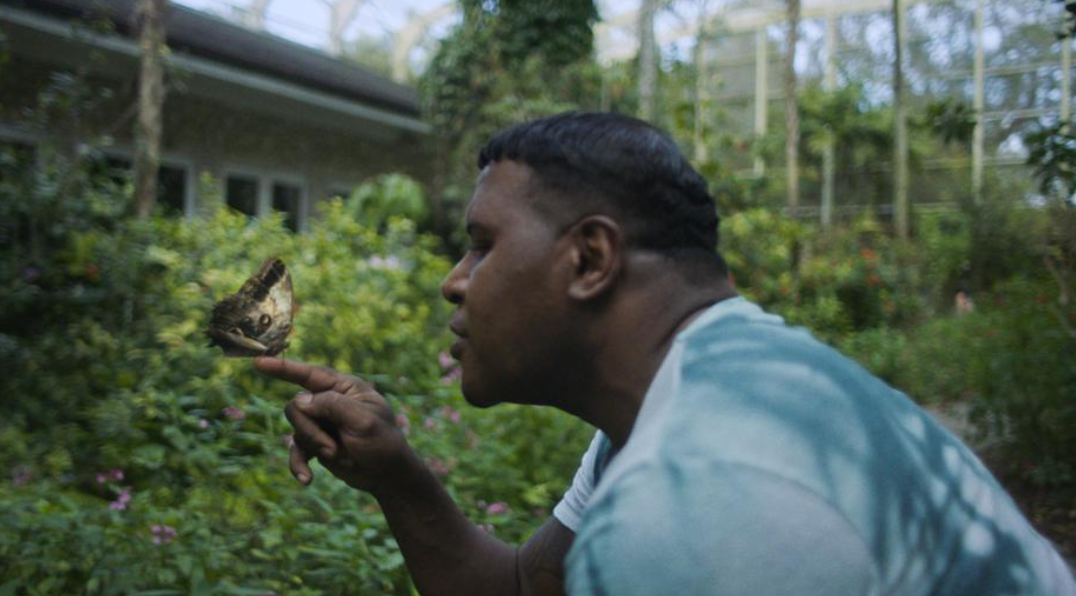“I cannot stay stagnant anymore,” David Taylor states as multicolored strobe lights cascade around him in the opening scene of “Caterpillar.” As the camera focuses, the viewer begins to grasp the full context: a nightclub, where Taylor jives to the background beat. The camera flits between the faces of the men that surround him, until finally resting on his eye, drawing us inward.
“Caterpillar” was one of the features broadcast this past week at the 54th Nashville Film Festival, the oldest-running film festival in the South. The festival included showings of documentaries, short films, feature films, music videos and red-carpet events; the event also encompassed various theaters in the Nashville area — including Vanderbilt’s very own Sarratt Cinema and Rothschild Black Box Theatre. Overall, the festival spared no expense in ensuring that its offerings this year were both diverse and encompassing.
Although I wasn’t able to catch many of the showings, I did catch “Caterpillar,” a documentary directed by Liza Mandelup. In the documentary, Mandelup explores the stories of people — with the central focus on David Taylor, a middle-aged, self-identifying mixed-race man — as they evaluate their experiences undergoing the infamous BrightOcular eye color-changing surgery.
In the documentary, we first follow Taylor through his life pre-operation as he introspects about his confidence, familial relationships, feelings of complacency and dwindling satisfaction with the outcome of his life and appearance, especially his brown eyes. Taylor acknowledges the negative influence that his childhood on the streets and having an absent father have had on him and explains that this, along with his being mixed-race and darker-skinned than many of his family members, contribute to his feelings of inadequacy.
Mandelup does an excellent job of ensuring that Taylor’s story is not overshadowed, despite the inclusion of other perspectives further along in the documentary. Mandelup is sure to bring the underlying thread — one that most viewers can attest to — of Taylor’s testimony to the forefront: insecurity. What weaves the stories told within “Caterpillar” to its audience’s perspective? The struggle to find acceptance and worthiness in a climate obsessed with beauty standards and comparison.
On account of Taylor greatly desiring the surgery to “fix” his self-perception but not being able to afford it, he emails BrightOcular detailing his plight and eventually comes to an agreement with the company in which he can undergo the surgery in India in exchange for his testimony being filmed as promotional material. In perhaps one of the more fast-paced moments in the documentary, we are whizzed through scenes of his preparation for the journey, including informing his mother, who does not approve of the proceedings.
Despite the fact that Taylor and his mother now appear close, we are privy to a tension in their relationship. In the scene where he informs her, his mother details her feelings toward other things Taylor has done, including his coming out. Although her ending sentiment is that she supports her son through almost everything, her monologue ultimately brings Taylor to tears of frustration as she makes it clear that she doesn’t approve of the surgery. The moment is visceral, and although it is not made explicit, Taylor’s tears in the moment are clearly more than vexation. They are a whelm of fear, anxiety, self-doubt and fragility he feels in the culmination of his decision to go through with the surgery.
In no time at all, Taylor, along with a group of others (some are models and some are social media personalities, almost all of them aspire to renown) are in India preparing for their operations. The group does introductions at the facility and we are run through a collection of bits of information and backgrounds. The doc gets a little muddled here. We feel connected to Taylor as we’ve followed his journey up until then; however, his scenes are suddenly cut in favor of new subjects. While the new perspectives could have been refreshing, the documentary does not reflect on these new testimonies or the subjects’ lives afterward in any meaningful way. We are left with a somewhat disappointing follow-up that in turn reduces the efficacy of their inclusion in the documentary. Only one of Taylor’s fellow patients is featured in the documentary after the surgery, in a short clip where it is established that she and Taylor still keep in contact.
In a scene before the operation, we are shown Taylor on the streets of India, ecstatically engaging in nightlife, while he purchases his “reveal outfit” for after the operation is complete. At what he would very likely proclaim as one of the crowning points of his life, his surgery goes awry. Taylor’s cosmetic contact lens of choice was an icy blue color. Despite multiple reassurances from the clinic contracted to use the BrightOcular contact lens for the surgery, on operation day, Taylor’s first eye is completed using a “jade green” color, the desired implant hue of his fellow patient (who in turn received Taylor’s blue implant). Although the other patient takes the news as well as he can, Taylor is distraught, in tears once again as his vision for his future self warps before him.
While the clinic offers to have both men undergo the surgery again, removing the incorrect lens from one’s eye, disinfecting it and inserting it into the other, they ultimately decline and Taylor completes the surgery, getting his second eye done the next day with the jade green implant.
Amidst the hiccup, Taylor comes to adore his new look. He is seen revamping his Instagram presence with photos of his new stark-eyed stare and fawning over compliments on his appearance. However, his newfound glee is brief. Shortly after his operation, Taylor moves to New York City to start anew, and it is there that he wakes up one day, in terror and pain. A visit to the doctor leaves Taylor with his fears actualized. The doctor informs him that the implants pose an immediate and accumulating threat to his eyesight and need to be removed as soon as possible. The news is a blow to the version of himself that Taylor had come into agreement with.
Taylor’s plight reflects similar ones of identity that many of us face. The choice to remedy your insecurities or learn to love (or live) with them is profound and sometimes a decision that shapes your self-perception. However, when the former is chosen, do the benefits on one’s confidence and mental health outweigh the potentiality of risks down the road? As he copes with such a reality, Taylor’s emotions are a pendulum of melancholy and reconciliation.
Once transformed, should a butterfly ever become a caterpillar again, even at the expense of its happiness?














